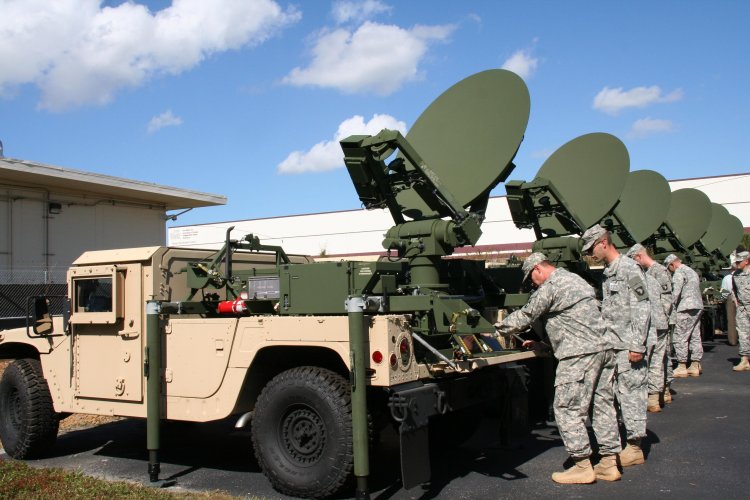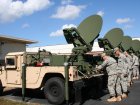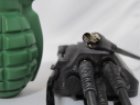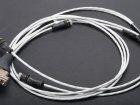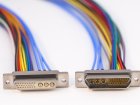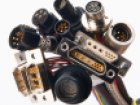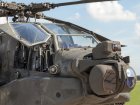News
Rugged and Rapid Specialty Interconnections keep Military Systems on the Move!
Bob Stanton, Director of Technology | Omnetics Connector Corp.
“Highly Portable electronics offer constant contact through Defense Satellite networks to help manage the Battlefield”
Satellite Central Data Control systems are modernizing todays Battlefield readiness and communications as data management satellites have become a key link in tactical troop deployment in battle situations. Portable receivers and data transfer stations in the field do much of the heavy lifting while they collect and forward direct sensor and communication info to and from a number of key battlefield sensors and elements. Manned and autonomous radar stations, surveillance devices and autonomous weapons can roam independently at the forward position. In addition, Interconnected Soldier borne systems including personal, communications, position, and surveillance data are transmitted to portable radar and data transfer stations. In turn, that info is sent through satellite control centers, overhead, that relay data to central command. Continuous contact and high signal integrity remains a key to providing highly rugged portability and mobility during field missions of our defense industry.
Omnetics Connector Corp. focuses on a combination of fully qualified military connectors and many specially designed and adjusted cable and connector systems adjusted for today’s highly mobile defense industry. New devices and applications have greatly expanded the process of modifying military standard interconnects to adapted fit, format and functions of our defense device evolution. New battlefield tactics are using unique data collection and analysis tools in the field and onboard soldiers, mobile vehicles and autonomous weapons. Often key sizes, and shapes are needed to fit within newly existing systems and full military quality of the complete interconnection is required. New linear, rotary and tilt actuators are operated remotely, electronic sensors are employed to detect radar and cyber interference. Optical surveillance and multi-spectral imaging systems for LIDAR detection and ranging as well as night vision systems are employed in headsets and weapons. In short, the electronic field of operation has changed dramatically and interconnects may often be rapidly adjusted to meet the new requirements. New requirements for cable shielding, and Connector performance during shock and constant vibration is being designed and tested for signal integrity assurance in the field. Today’s smart weapons, or smart munitions leverage computerized guidance systems to navigate to their targets. Advanced sensors and algorithms in the processors, among others, are paving the way for potential advanced development of fully autonomous weaponry being guided remotely by ground troops, laser tracking and or from distant satellites.
Cable and connectors provide the interconnection routes within military electronic systems to one central power pack or supply. It is designed to supply multiple instruments serving the equipment or the soldier in the battlefield. Each of the individual units are chartered with different functions or services to supply information or direct data to the others. Because they do different work, they often require different current and voltage levels to operate and can be different distances or placements from each other. In addition to different voltages and current flow, each instrument can and often uses different electrical signal processes to provide the best and highest quality flow of data, information and trigger information to the other units that need it. Ground troops equipped with helmet mounted cameras for observing and sending information back to command central use signals from the camera using high speed digital signals that requires differential signal wiring. The connector and cable must be designed to meet the output capacity and resistance, (impedance), of the camera and of the unit receiving the signal at the other end. Signals in tracking and positioning gyros for flight weapons often use very low voltage formats in directing the device to change position of the direction-control fins. The connectors used must withstand extreme environments and also be small and lightweight to allow the device to be extremely fast and maneuverable.
Frequently the extended cables and connectors used to route signals and power from one portion of the system to another are exposed. Ensuring product reliability requires a combined focus on material selection, physical design, and electrical processing capabilities. To ensure new designs survive and perform to expectations, a range of specifications and guidelines are established early in the process of development.
The breadth and depth of new designs requires the designer to consider specifications and level that his equipment may need to be designed to meet. Micro-Connector and cable system designs are guided toward high reliability performance using MIL-DTL- 83513. Nano-sized interconnect systems are tested to the specified MIL-DTL-32139. These specifications define numerous levels of testing that assure continuous performance through shock and vibration, temperature cycling, even the number of contact mating and un-mating cycles they must pass. To achieve these rugged specifications, the smaller connectors must use specially designed pin and socket interface methods that remain intact during their use. Specially tempered Beryllium-Copper (BeCu) spring pins are designed and plated with layers of nickel, then over-plated with gold.
New military quality connectors needed for special applications are now fast and easily done. Omnetics has a direct “Three-Step-Process”. “Application Specific Connectors” will meet your needs and be available on-time!
- Designers can view miniature connectors with proven performance on our websites or discuss with our sales team. If one looks close, ask for a sample or discuss variations on email or the phone.
- Connect with an Omnetics connector designer for on-line collaboration making a new solid model of exactly what is needed. This should take less little as 2 days.
- When you like the solid models, ask for a 3-d sample made using automated material added process. This should take less than 24 hours.
The new 3-d model is shipped to the customer to fit it into his new application for final approval or/and re-define some specific change needed.
Omnetics focus on Advanced Military applications that are ready for your Applications.



